Stories > Connected Through Art
Connected Through Art
In the face of the Covid-19 pandemic, the Singapore International Foundation’s Arts for Good Fellowship global alumni leverage art and technology to create a more inclusive world.
BY ALYWIN CHEW
hile the Covid-19 pandemic has caused unprecedented disruptions in the world, it has, like all crises, inherently shone a light on humanity and its ability to band together during trying times. With border closures and travel restrictions very much in place, a series of Arts for Good (A4G) projects by the Singapore International Foundation (SIF) has sought to bring about positive social change by harnessing the power of arts and culture. We shine the spotlight on three such initiatives.
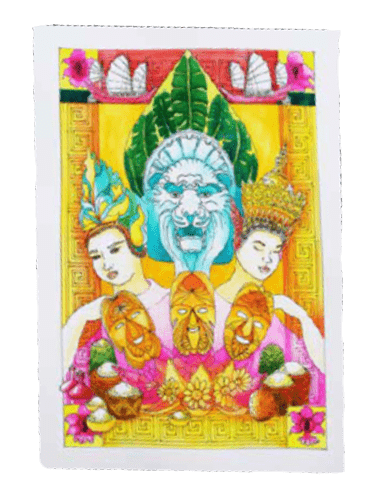
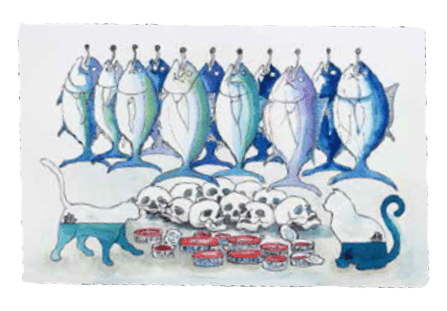
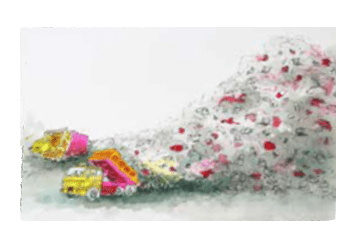
Legends of the SEA brought together A4G Fellowship alumni from the Philippines, Singapore, Indonesia and Malaysia, who engaged children from underserved backgrounds in the region to create artworks that highlight the traditions and cultural understanding of diverse communities.
LEGENDS OF THE SEA
Although most children were forced to stay home during the peak of the pandemic, how they went about their day differed greatly depending on their living and educational circumstances.
Indeed, this was exactly what went through the mind of artist Lee Hui Ling.
“It’s all good with the well-off families who can afford means of entertainment for their children. I can’t imagine what the situation must be like for marginalised communities,” says Lee, a member of the 2019 cohort of the SIF A4G Fellowship.
With this in mind, she and four other members of her cohort – Pia G. Ortiz-Luis from the Philippines, Loh Wan-Ting from Singapore, Evelyn Ghozalli from Indonesia, and Soonufat Supramaniam from Malaysia – got together in the virtual world to fashion a multifaceted art activity book.
Apart from keeping young minds occupied, it would merge storytelling and art-making to highlight diverse cultures and heritage in Southeast Asia and help develop psycho-motor skills.
The result was Legends of the SEA, which contains 15 lesson plans that art educators in the region could use to engage children aged between seven and 11 from underserved communities in Southeast Asia.
Through these plans, children learnt how to craft a host of items such as paper lanterns, flip books, paper puppets of the Wayang Kulit – the traditional Javanese puppet theatre play – and bottles that encapsulate the beauty of the Sama-Bajau, also commonly known as “Sea Gypsies”.
Using materials that can be commonly found at home to create these artworks, children could make use of existing resources while engaging in these activities.
Besides publishing the book in English, Tagalog, Bahasa Indonesia, Bahasa Melayu and Thai, the fellows reached out to 50 regional non-governmental organisations and partnered eight organisations to deliver online workshops across different communities in Southeast Asia.
“It is extremely important that during times like these, no community gets left behind because of fewer resources or a lack of access to services,” says Loh. “The opportunity to learn, create, communicate and build safe spaces for each other through art-making and storytelling inspired by the understanding of different cultures can enhance empathy and unite people.”
The fellows also gained valuable insights. According to Loh, the project revealed new possibilities of creating activities using a therapeutic approach with art education and local heritage.
For Lee, Legends of the SEA highlighted the importance of patience, empathy and understanding when working with marginalised communities.
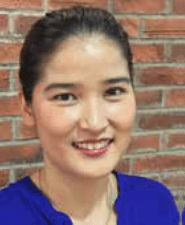
“ETHICS IS AN IMPORTANT CONSIDERATION WHEN WORKING WITH MARGINALISED COMMUNITIES. WE DO NOT WANT TO IMPOSE OUR AGENDAS ON THEM. UNDERSTANDING LOCAL CULTURAL NUANCES ARE KEY IN MULTICULTURAL PARTNERSHIPS,” SAYS LEE HUI LING, 2019 A4G FELLOWSHIP ALUMNUS.
“Ethics is an important consideration when working with marginalised communities. We do not want to impose our agendas on them. Understanding local cultural nuances are key in multicultural partnerships. Being able to adapt is important in order to cope with unexpected changes throughout the duration of the project,” she shares.
The reception to the activity book has been nothing short of overwhelming.
Faida Faisal, a Sama-Bajau native who teaches children in Barangay San Dionisio, Parañaque City in the Philippines, is among those who have lauded the initiative, calling the bottle project an important means of preserving her heritage.
In January this year, Faisal conducted a Legends of the SEA workshop for seven Sama-Bajau children and five parents. The activity was supported by the Cartwheel Foundation, of which A4G Fellowship recipient Ortiz-Luis is the executive director.
Over in Malaysia, art educator Rolitah Robinson from the Dignity For Children Foundation also shared words of praise.
“This is a great platform for children to learn about different types of art and ways to express oneself beyond just drawing and colouring. My students had plenty of fun creating their artworks,” she says.
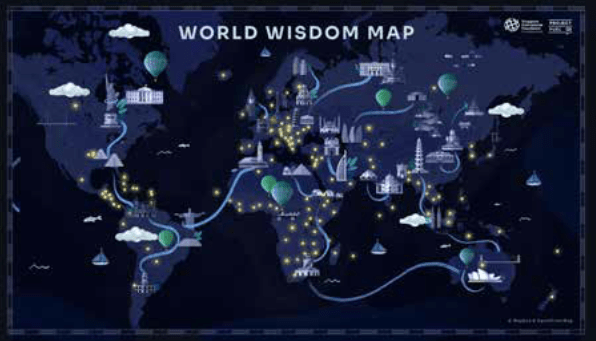
WORLD WISDOM MAP
Driven by the belief that every person has a unique existence worth celebrating, SIF 2018 A4G Fellowship alumnus Deepak Ramola has been curating life lessons from individuals around the globe for over 10 years, and sharing them through workshops and performances held by his organisation, Project FUEL. When Covid-19 struck, Project FUEL adapted this approach to curate life stories themed around the pandemic, in collaboration with the SIF. What transpired was the World Wisdom Map, an online repository of 400 life lessons that was launched on Christmas 2020.
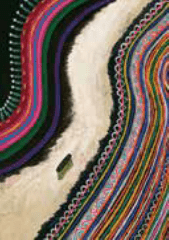
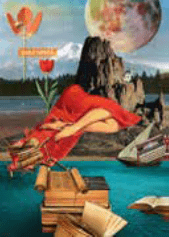
Spearheaded by 2018 A4G Fellowship alumni Deepak Ramola from India and Singaporean art teacher Hazel Huang, the World Wisdom Map was put together by students from Singapore and 10 artistes from Southeast Asia. It showcased 400 life stories of people around the world, including Nobel Peace Prize laureate Jody Williams.
Among these 400 stories were the life lessons of transgender artistes in India, Bollywood actress Dia Mirza and even Nobel Prize winner Jody Williams.
“Globally, there has been a shift in the social, emotional and mental well-being of people due to the lockdown. We were curious to study the insights and coping mechanisms people have employed in these unprecedented times,” says Ramola, the founder and artistic director of Project FUEL.
As simple as this endeavour might sound, putting together the World Wisdom Map was, in fact, a tall task that required 11 months of groundwork by various professionals. Besides the team that solicited life stories from around the world, the project also had a web design team, a data team and an art team comprising 10 artistes from Southeast Asia – not to mention students and teachers from India and Singapore.
According to Ramola, most of the stories from Singapore were focused on the themes of hope and personal growth, and were laced with aspirational value. Meanwhile, life lessons from Africa were rooted in stories about family, tradition, history and hard work. People living in small islands in the Pacific often had stories related to climate action and environmental challenges.
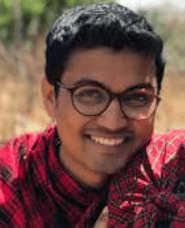
“This project validated for me that there are over seven billion people on earth and there will be no sustainable development if we are not willing to learn from each other.”
Deepak Ramola, 2018 A4G Fellowship alumnus
Documenting the personal stories of people around the world serves as more than a heartwarming project about inclusivity – it can also pave the way to designing better solutions to the world’s problems.
“When we talk about solutions to human problems, we need to shift gears from looking at them as formulas to seeking more perspectives,” observes Ramola. “Most importantly, this project validated for me that there are over seven billion people on Earth and there will be no sustainable development if we are not willing to learn from each other.
“Solutions do exist if only we are willing to reach out and look for them. Some life lessons are so similar that one might think that they come from the same house, whereas the contributors may have never even heard of another’s country. We are more alike than different and, therefore, the hope for humanity must drive our decisions, policies and purpose.”
But the project was not merely contained on the internet. At Singapore’s Changkat Primary School, it was transformed into an educational journey for Primary 4 pupils who got to learn about new countries, relate to the experiences of the participants, and think about the life lessons shared.
The person who made this possible was Hazel Huang, a Singaporean teacher at the school and a fellow from the same A4G Fellowship cohort as Ramola.
“This project offers a glimpse of people’s lives in other parts of the world that could otherwise be unknown to the students,” she says. “This exposure to the diversity of cultures and learning about the life lessons of others will help them to learn empathy and gratitude.
“Learning through stories enabled the students to make sense of the world in relation to themselves.”
SAME-SAME
With most people forced to stay home during the pandemic, video conferencing platform Zoom has become one of the go-to applications for office communications.
But under the creative hands of Singaporean independent theatre practitioner Jeffrey Tan, this digital tool was turned into Same-Same, a project with the noble cause of raising awareness about performers with disabilities.
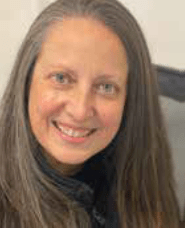
“EACH OF US HAS UNIQUE ABILITIES. WE COME FROM DIFFERENT CULTURES AND COUNTRIES, WITH DIFFERENT OPPORTUNITIES AND CHALLENGES. YET WE ALL SEEK CONNECTION. IN OUR SHARED HUMANITY. WE TRULY ARE THE SAME,” SAYS KARI SEELEY, CEO, NO STRINGS.
Created in collaboration with Adelaidebased No Strings – a theatre company that works exclusively with differently abled performers – and the Diverse Abilities Dance Collective (DADC) by Singapore’s Maya Dance Theatre, the project saw Singaporean and Australian artistes with disabilities put up four concurrent performances in November 2020 that gave viewers a glimpse of what their lives were like and the challenges they faced during the pandemic.
“Each of us has unique abilities. We live in different communities, we come from different cultures and countries, with different opportunities and challenges,” says No Strings CEO Kari Seeley, who is from the same A4G Fellowship cohort as Tan. “Yet we all seek connection, we have a deep need to speak, and to be heard. In our shared humanity, we truly are the same.”
For Kavitha Krishnan, the co-founder of Maya Dance Theatre, the invitation from Tan to work on Same-Same was something that she found “impossible to pass on” as the project would give her dancers at DADC a means to do something new and meaningful during the forced break in their planned schedule.
“Feeling alone, trapped and disengaged from the social space due to the pandemic was a strong sentiment experienced by the artistes of DADC and No Strings. Coming together to be connected through the digital space was a relief for them. They still could be connected, make new friends, and make art as a team,” she opines.
“Through this project, they found meaning. They were excited to connect and really looked forward to the weekly sessions. This excitement of making connections and being connected is a human trait that this project was able to celebrate.”
Singaporean Jaspreet Kaur, who was one of the performers, said that the biggest lesson for her was discovering the journeys and challenges her peers had to undergo. Learning how to adapt her performance skills for the virtual world and getting the opportunity to work with new directors was also a highlight.
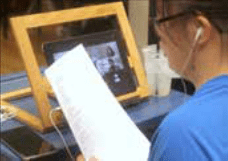
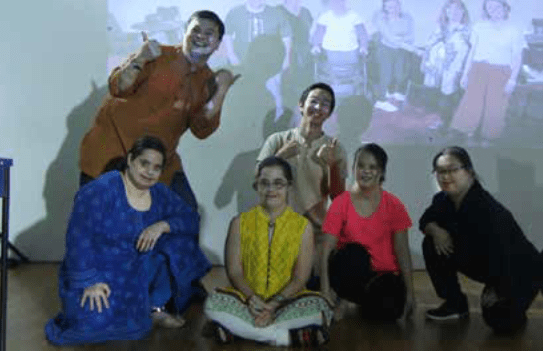
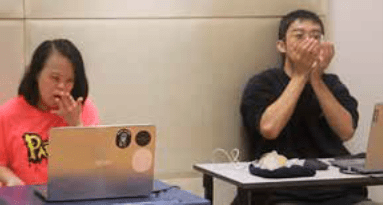
Same-Same saw a collaboration between A4G Fellowship alumni, Singaporean theatre practitioner Jeffrey Tan and Kari Seeley of Adelaide-based theatre company No Strings, and Singapore-based Maya Dance Theatre, which provided an exclusive artistic platform to differently abled performers from Singapore and Australia.
Australian artiste Kobi Taylor found the experience to be equally stimulating. “I never really went online before Same-Same. This project has been most rewarding as I got to meet new people and understand how they are dealing with Covid-19. It also allowed me to meet new people and share my story. It gave me something to look forward to every week,” she says.
Apart from the performers, Tan also admits to have learnt new things. For example, he says that the novel experience of creating a collaborative theatre and dance work had inspired him enough to adapt the monologues that he facilitated with some seniors into a series of short online videos.
“The Same-Same experience reminded us to be present mentally and emotionally when we are connected online to listen, support, challenge, collaborate and create,” he reveals. “The structure of one person speaking at a time was very good for most of the performers because they got to practise deep listening and had to find ways to react to each other’s ideas.”
His counterparts, too, are grateful for the individual lessons they have gleaned. For Seeley, the project allowed the company to develop the confidence and framework to engage in other forms of online collaboration.
Interestingly, she also found that speaking the same language was no guarantee for preventing misunderstandings. She notes that Australians have a penchant for using slang and colloquialisms that were not necessarily understood by their Singaporean counterparts.
The project was also filled with intriguing takeaways. “In Singapore, people’s names are often full of cultural and familial connections, and people are keen to share those meanings, which often define them and their place in their family and community. This is not usually known or expressed in Australia,” she says.
For Emma Beech, a co-director of Same- Same and member of No Strings, a major learning was that the language of theatre extends across all cultures – that theatre people have a “sense of both the concrete and abstract” and can mix between the two, and which isn’t changed by where they come from geographically.
“More importantly, by reminding me to be as grounded, appreciative and real as they are, the community that I have wanted to empower is also teaching me how to empower myself,” she concludes.
